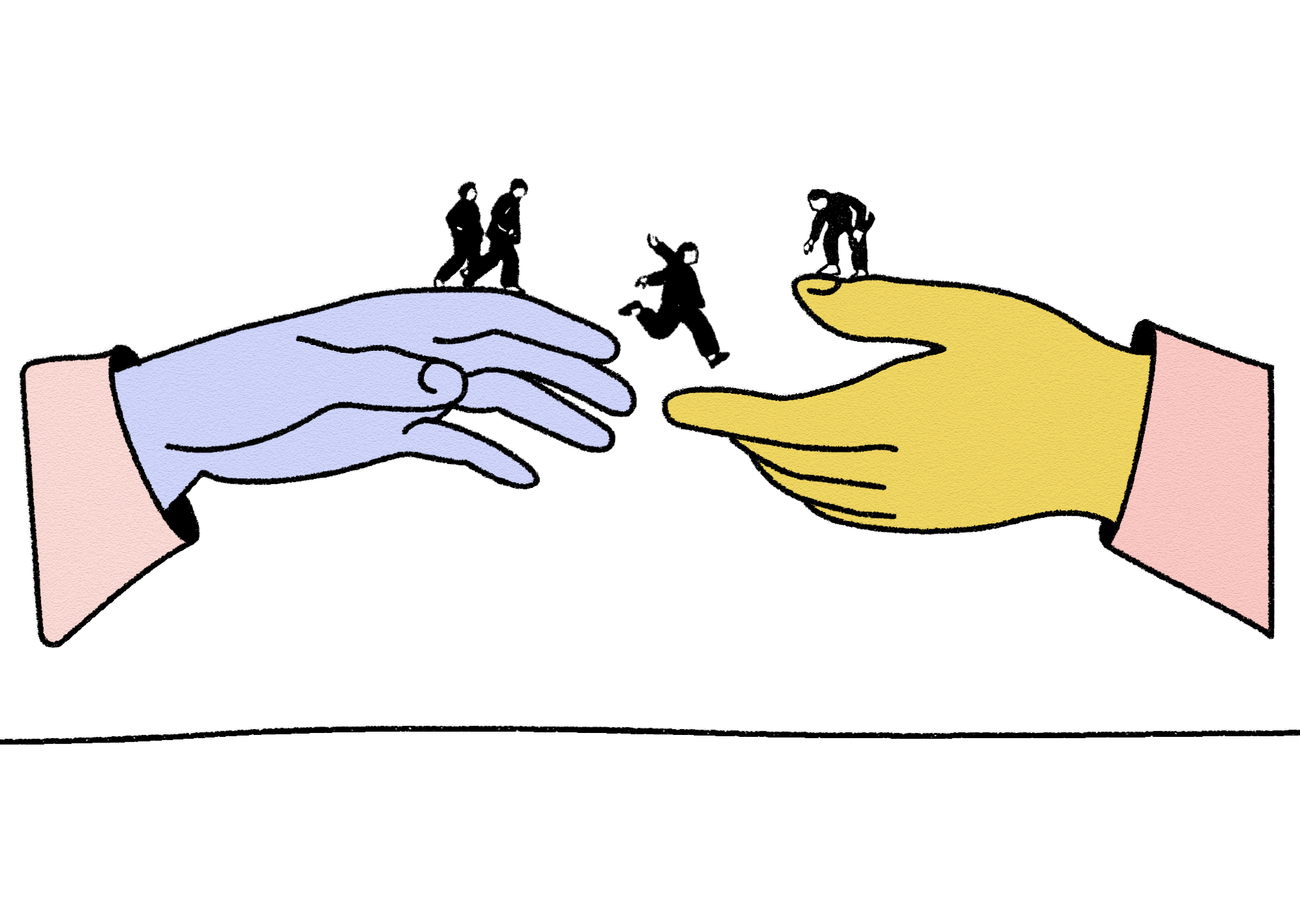View more from
ArticleDelta’s clients span many regions, and employers across the world have a varied understanding and experience of the spectrum of diversity of people at work. One area that needs increased understanding is gender identities, so we prepared this article as a general introduction for employers, HR managers, and other individuals on gender identities and what this means for the workplace.

Understanding terminologies correctly
One term that more and more people have become aware of is ‘transgender’. Transgender is an umbrella term, describing individuals whose gender identity is different from the sex they were assigned at birth. An individual’s gender identity does not always correspond to their sex assigned at birth, and they may prefer using a gender identity to describe themselves which is not based on their birth sex. For instance, when a person assigned female at birth identifies with a male gender identity or gender expression, they may identify themselves as a trans man. Other examples of identities that trans individuals may identify with include non-binary or gender fluid. For a more detailed definition of each identity, see Delta’s glossary.
Another important but more familiar term is LGBT+. This is a short form for Lesbian, Gay, Bisexual, Transgender, and ‘+’ for other variant identities. The term, initially introduced in the 1980s is commonly seen as an umbrella term for various gender and sexual identities. An important point often missed is that LGBT+ covers both gender identities (e.g., individual’s sense of their gender) and sexual orientations (e.g., individual’s sexual, romantic, and/or emotional attraction towards others).

Transgender issues and discussion in society
Visible representation of the trans community has increased significantly over the years with the help of the media in certain parts of the world. There are a number of famous figures globally, such as actors, sport players, musicians etc., who have come out as members of the trans community, and this has certainly contributed to raising awareness and understanding of trans issues. However, trans inclusion is slow and many trans individuals still experience barriers on various aspects of everyday life, such as health care, housing, and employment.
The UK government data 1Government Equalities Office, (2018) National LGBT Survey: Summary Report shows difficulties that trans individuals may suffer on a daily basis. Some of them include:
- Trans people are often discriminated against when seeking rented accommodation
- Trans people are more likely to be offered conversion therapy to “cure” them
When looking through an intersectional lens – e.g., being Black and Transgender, other research 2 James, E.S., Brown, C. and Wilson, I., (2015) Transgender Survey: Report on the Experiences of Black Respondents indicates that Black trans individuals tend to be in a worse situation when compared to White members of the community in various aspects of life, such as having a higher probability of being homeless, sexually assaulted, or living with HIV.
Transgender issues in the workplace
Employment and the workplace are not immune to transgender issues. One study 3Bachmann, C.L. and Gooch, B., (2018) LGBT in Britain: Trans Report on LGBT+ individuals finds that:
- Trans people are more likely to be unemployed
- Trans people are more likely to be attacked by a colleague or customer
Other common issues in the workplace 4Bachmann, C.L. and Gooch, B., (2018) LGBT in Britain: Trans Report5McKinsey (2021) Being transgender at work. https://www.mckinsey.com/featured-insights/diversity-and-inclusion/being-transgender-at-work include, masking their trans identity for fear of discrimination, being pressured to come out, outing of their trans identity or transition status, less likely to be able to show one’s full self during interviews, being the “only” at work, or being misgendered.

The value of enhancing trans inclusion
Advancing trans inclusion will bring organisations various benefits. At Delta, our premise is that organisations thrive when each person flourishes, thus, for each individual to bring their best self to work and flourish, inclusion is necessary. Inclusive workplaces enable everyone to have their voice heard, their perspectives recognised, and their authentic selves valued, and this consequently leads to optimal performance. Organisations therefore need to embrace all their people to get the best out of individuals.
Secondly, organisational support of trans employees heightens employees’ identification with an organisation – not only minority professionals but also employees from majority groups. This means that how under-represented groups are treated by their employer, has significant impact on the pride and loyalty of the wide employee base – majority and minority employees alike.
The third potential benefit of trans inclusion is improved talent acquisition. According to the 2021 UK census, younger people are more likely to identify themselves as a member of the trans community. 6ONS, (2021) Gender identity: age and sex, England and Wales: Census 2021 Another study, 7Dupreelle, P., Novacek, G., Lindquist, J., Micon, N., Pellas, S. and Testone, G., (2020) A New LGBTQ Workforce Has Arrived—Inclusive Cultures Must Follow found that younger generations are much more likely to be an ally of the LGBT+ community, even if they are not part of it, compared to their older counterparts. If an organisation wants to have a head start in attracting generations coming to employment in the near future, now is the time to start demonstrating trans inclusion, to stay relevant and attract incoming generations of talent.
Trans inclusion also raises organisational brand and reputation. Many organisations publicly claim LGBT+ inclusion; however, our experience is that “T+” receives less focus than “LGB”. In fact, there are not many organisations yet who explicitly speak about their commitment to trans inclusion separate from that for LGBT+. Public, and internal, advocacy of trans inclusion independent of inclusion for all sexual orientations will likely position your organisation one step ahead of your competition. However, as with many other movements, it is important to ensure that this advocacy is not just symbolic but substantive. For example, it is one thing to display rainbow flags and lanyards, but it is another thing to invest in ‘all gender’ washrooms and role model the use of preferred personal pronouns as a leader.
Organisation-led support of trans inclusion is not only beneficial to business, but also to society as well, because when public bodies with strong influential power advocate the importance of this and proactively take action, the pace of progression is accelerated, and outcomes and impact will be significantly greater.

CALL TO ACTION:
- Educate employees
First and foremost, organisations should provide employees with the opportunity to gain basic knowledge of transgender issues. This should cover topics such as various gender identities, microaggressions towards trans individuals, and trans affirming language. You could also start with sharing this article.
- Provide a safe space
Organisations should also work on creating a safe place for trans issues and experiences to be raised. This can be done by encouraging non-judgemental communication, having transparent conversations and equipping managers and team members with perspective-taking skills. Such skills enable individuals to see a situation from another point of view, thus enabling cisgender employees to understand some of their trans colleagues’ experiences. Such safe spaces and cultures mean that trans employees will feel more comfortable disclosing their trans identity to their organisation.
- Involve trans individuals and experts on trans inclusion in conversation
Many cisgender people feel that they do not have enough knowledge to establish a trans inclusive workplace, and this prevents them taking action. However, understanding ‘everything’ about trans issues is not the most important thing. Consult experts and members of the trans community to understand experiences of trans individuals in your workplace, and establish what is critical for trans inclusion.
- Review organisation policies and practices and update them
HR or Diversity, Equity & Inclusion (DEI) leaders may think they need to make trans inclusive policies from scratch and this might feel like a big hurdle. Trans inclusion, however, can be advanced simply by revising existing organisational policies and updating them with trans inclusive practices. These practices include: normalising use of pronouns to all employees; introducing gender neutral dress code; or upgrading healthcare benefits to cover costs for gender transition. It is also important to make those policies visible and accessible to all employees once updated.
- Provide inclusive facilities where possible
Bathrooms or changing rooms are examples of spaces where trans individuals tend to find that more organisational support is needed. Again, consult with experts and invite trans employees for guidance on this and other facilities/spaces at work.
- If you don’t know where to start, consult experts
You may not know any employee who identifies as transgender in your organisation, this may be because trans individuals in your workplace don’t want to come out, it may also mean that trans individuals are not attracted to you as an employer. Rather than assume it’s ‘not an issue here’ consider consulting experts who understand inclusion and equity across multiple identities, and help organisations create inclusive cultures for better performance. This will help you identify the most effective and efficient approach to building a trans, and all-inclusive workforce in a thriving organisation.

At Delta, we can support you on your trans inclusion journey. We can host confidential Insight sessions to surface everyday experiences of trans employees, and take a ‘temperature check’ from both trans and cisgender perspectives in your organisation. We also work with leaders, teams and individuals to affect change that makes the workplace thrive, and become a fairer place for all. Delta can meet you at any stage in your journey, working with you to meet your representation targets and equity and performance goals. We’re trusted to deliver on this by industry leaders, FTSE100 companies, and government organisations across the globe
For more information on how Delta can help you and your organisation, get in touch now
References
[1] Government Equalities Office, (2018) National LGBT Survey: Summary Report
[2] James, E.S., Brown, C. and Wilson, I., (2015) Transgender Survey: Report on the Experiences of Black Respondents
[3] Bachmann, C.L. and Gooch, B., (2018) LGBT in Britain: Trans Report
[4] Bachmann, C.L. and Gooch, B., (2018) LGBT in Britain: Trans Report
[5] McKinsey (2021) Being transgender at work. https://www.mckinsey.com/featured-insights/diversity-and-inclusion/being-transgender-at-work
[6] ONS, (2021) Gender identity: age and sex, England and Wales: Census 2021
[7] Dupreelle, P., Novacek, G., Lindquist, J., Micon, N., Pellas, S. and Testone, G., (2020) A New LGBTQ Workforce Has Arrived—Inclusive Cultures Must Follow
Related resources

Article
Everyone’s talking about psychological safety for inclusion
Ensuring a sense of confidence that voices are heard and valued at work.
Read more








